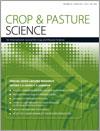Australian farmers and scientists have embraced the use of new pasture legume species more than those in any other country, with 36 annual and 11 perennial legumes having cultivars registered for use. Lucerne (Medicago sativa), white clover (Trifolium repens), and red clover (T. pratense) were introduced by the early European settlers and are still important species in Australia, but several other species, notably annual legumes, have been developed specifically for Australian environments, leading to the evolution of unique farming systems. Subterranean clover (T. subterraneum) and annual medics (Medicago spp.) have been the most successful species, while a suite of new annual legumes, including serradellas (Ornithopus compressus and O. sativus), biserrula (Biserrula pelecinus) and other Trifolium and Medicago species, has expanded the range of legume options. Strawberry clover (T. fragiferum) was the first non-traditional, perennial legume commercialised in Australia. Other new perennial legumes have recently been developed to overcome the soil acidity and waterlogging productivity constraints of lucerne and white clover and to reduce groundwater recharge and the spread of dryland salinity. These include birdsfoot trefoil (Lotus corniculatus), Talish clover (T. tumens), and hairy canary clover (Dorycnium hirsutum). Stoloniferous red clover cultivars and sulla (Hedysarum coronarium) cultivars adapted to southern Australia have also been released, along with a new cultivar of Caucasian clover (T. ambiguum) aimed at overcoming seed production issues of cultivars released in the 1970s. New species under development include the annual legume messina (Melilotus siculus) and the perennial legume narrowleaf lotus (L. tenuis) for saline, waterlogged soils, and the drought-tolerant perennial legume tedera (Bituminaria bituminosa var. albomarginata). Traits required in future pasture legumes include greater resilience to declining rainfall and more variable seasons, higher tolerance of soil acidity, higher phosphorous utilisation efficiency, lower potential to produce methane emissions in grazing ruminants, better integration into weed management strategies on mixed farms, and resistance to new pest and disease threats. Future opportunities include supplying new fodder markets and potential pharmaceutical and health uses for humans and livestock. New species could be considered in the future to overcome constraints of existing species, but their commercial success will depend upon perceived need, size of the seed market, ease of establishment, and management and safety of grazing animals and the environment. Molecular biology has a range of potential applications in pasture legume breeding, including marker-assisted and genomics-assisted selection and the identification of quantitative trait loci and candidate genes for important traits. Genetically modified pasture plants are unlikely to be commercialised until public concerns are allayed. Private seed companies are likely to play an increasingly important role in pasture legume development, particularly of mainstream species, but the higher risk and more innovative breakthroughs are likely to come from the public sector, provided the skills base for plant breeding and associated disciplines is maintained.
How to translate text using browser tools
10 December 2012
Temperate pasture legumes in Australia—their history, current use, and future prospects
P. G. H. Nichols,
C. K. Revell,
A. W. Humphries,
J. H. Howie,
E. J. Hall,
G. A. Sandral,
K. Ghamkhar,
C. A. Harris
ACCESS THE FULL ARTICLE

Crop and Pasture Science
Vol. 63 • No. 9
Dec 2012
Vol. 63 • No. 9
Dec 2012
annual legumes
cultivars
nitrogen fixation
pasture legumes
perennial legumes
plant breeding




